


Recovery Techniques For Sports Injuries

Sports injuries are an unfortunate but common part of an athlete's life. Whether you're a seasoned pro or a weekend warrior, knowing how to recover from injuries is paramount to getting back in the game and preventing future setbacks. In this article, we will explore a variety of recovery techniques for sports injuries that can help you regain your strength, mobility, and confidence.
1. Rest And Immobilization: In the immediate aftermath of an injury, one of the first recovery steps is often rest and immobilization. Rest allows the body to begin the natural healing process, and immobilization can help prevent further damage. This may involve the use of braces, slings, or casts.
2. RICE Protocol: The RICE protocol is a well-known method for managing sports injuries. It stands for Rest, Ice, Compression, and Elevation. Rest and elevation help reduce swelling, while ice and compression can alleviate pain and inflammation.
3. Physical Therapy: Physical therapy is a cornerstone of sports injury recovery. Skilled physical therapists develop customized exercise programs to help athletes regain strength, mobility, and function. These programs often include stretching, strengthening, and functional exercises.
4. Heat And Cold Therapy: Heat therapy can be beneficial for relaxing tight muscles, increasing blood flow, and easing pain. Cold therapy, on the other hand, can help reduce inflammation and numb pain. The choice between the two depends on the type and stage of the injury.
5. Massage And Myofascial Release: Massage therapy can help relieve muscle tension, improve circulation, and promote relaxation. Myofascial release techniques target the fascia, the connective tissue surrounding muscles, to release tension and improve mobility.
6. Acupuncture And Dry Needling: Acupuncture and dry needling involve inserting thin needles into specific points on the body to alleviate pain and promote healing. These techniques are often used in conjunction with other forms of therapy.
7. Electrical Stimulation And Ultrasound: Electrical stimulation and ultrasound are modalities used by physical therapists to reduce pain and enhance the healing process. They can improve circulation, reduce muscle atrophy, and relieve discomfort.
8. Taping And Bracing: Taping and bracing can provide added stability and support for injured areas. Proper taping techniques can help protect injured joints and tissues while allowing for some movement.
9. Gradual Return To Activity: Returning to your sport gradually is crucial for avoiding re-injury. Your physical therapist or healthcare provider can develop a structured plan that incrementally increases the intensity and duration of your activity as you heal.
10. Nutrition And Hydration: Proper nutrition plays a critical role in recovery. A balanced diet rich in nutrients can aid in tissue repair and reduce the risk of complications. Staying hydrated is equally important for overall healing.
11. Mental Health Support: Sports injuries can take a toll on an athlete's mental well-being. Seeking psychological support or counseling can help athletes cope with the emotional challenges of recovery and regain their confidence.
12. Preventive Measures: Preventing future injuries is a crucial part of recovery. Athletes should incorporate injury prevention exercises, proper warm-ups, and cool-downs into their routine to reduce the risk of re-injury.
Recovery techniques for sports injuries are diverse and can be highly effective when used in the right context. Athletes should seek professional guidance to create a comprehensive recovery plan that aligns with their specific injury and goals. By following these techniques and committing to their rehabilitation, athletes can recover fully and safely, getting back to their sport with the strength and resilience they need to excel. Remember, a structured recovery plan is the path to a successful comeback.
Your Path To Slope Success
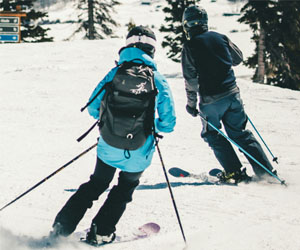 2. Wear Appropriate Clothing: Dress warmly and in layers to stay comfortable on the slopes. Wear moisture-wicking base layers to keep sweat away from your skin, insulating layers to trap warmth, and a waterproof and insulated ski jacket and pants to protect against the cold and snow.
2. Wear Appropriate Clothing: Dress warmly and in layers to stay comfortable on the slopes. Wear moisture-wicking base layers to keep sweat away from your skin, insulating layers to trap warmth, and a waterproof and insulated ski jacket and pants to protect against the cold and snow.
3. Choose The Right Equipment: Renting skiing equipment is a practical option for novices, as it allows you to try different gear without a significant investment. Make sure your boots are well-fitted, and your skis are suited to your skill level. Ski shops and rental centers can provide expert advice.
4. Master The Snowplow (Pizza) Technique: The snowplow, often called the "pizza" technique, is the foundation for beginner skiers. To snowplow, point the tips of your skis inward, creating a wedge shape. This position slows you down and helps you control your speed. As you progress, you can start making parallel turns.
The Timeless Appeal Of Riding The Waves
 Physical Fitness And Wellness: Surfing is a sport that promotes physical fitness and well-being, making it an excellent choice for individuals of all ages. Paddling out to the lineup, maintaining balance on the board, and riding the waves require cardiovascular endurance, strength, and flexibility. Surfing provides a full-body workout that helps keep surfers in shape and supports a healthy lifestyle, regardless of age.
Physical Fitness And Wellness: Surfing is a sport that promotes physical fitness and well-being, making it an excellent choice for individuals of all ages. Paddling out to the lineup, maintaining balance on the board, and riding the waves require cardiovascular endurance, strength, and flexibility. Surfing provides a full-body workout that helps keep surfers in shape and supports a healthy lifestyle, regardless of age.
Mental Well-Being: Surfing isn't just about physical fitness; it also nurtures mental well-being. The calming sound of the ocean, the feel of the saltwater, and the meditative quality of waiting for the perfect wave contribute to a sense of peace and relaxation.


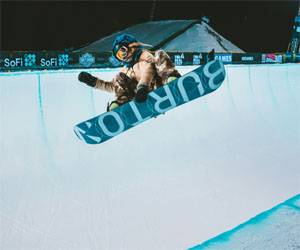
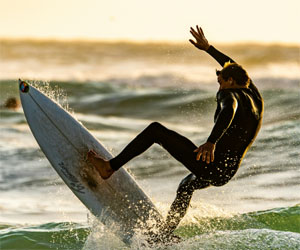
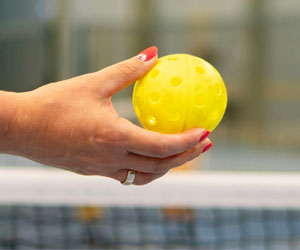

Unleash Your Inner Shredder
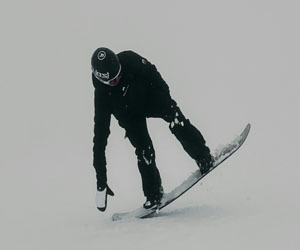 3. Progress To Grabs: Grabs are stylish tricks that involve reaching down to touch your snowboard while in the air. Common grabs include the indy grab (front hand on the heel edge), mute grab (front hand on the toe edge), and melon grab (back hand on the heel edge). Experiment with different grabs to add flair to your jumps.
3. Progress To Grabs: Grabs are stylish tricks that involve reaching down to touch your snowboard while in the air. Common grabs include the indy grab (front hand on the heel edge), mute grab (front hand on the toe edge), and melon grab (back hand on the heel edge). Experiment with different grabs to add flair to your jumps.
4. Learn Spins: Spinning in the air adds a dynamic element to your riding. Start with 180-degree spins and work your way up to 360s and beyond. Focus on your shoulders and upper body to initiate the spin while keeping your lower body aligned with the board.
5. Perfect Your Buttering: Buttering is a stylish ground trick where you shift your weight and flex your snowboard to create fluid, spinning movements. It's a creative way to showcase your skills on the slopes and add some freestyle elements to your riding.
6. Progress To Rails And Boxes: Once you're comfortable with basic tricks, you can venture into the terrain park to try your hand at rails and boxes. These features provide opportunities for sliding and grinding tricks.
Mastering The Art Of Paintball Marksmanship
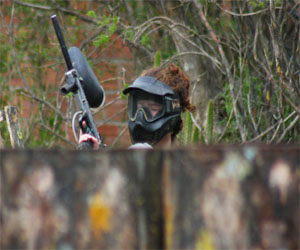 Precision shots in The Colorful Battle are the key to turning the tide of the game in your favor. Whether you're a seasoned pro or a novice eager to make your mark, honing your marksmanship skills is essential. Here's a closer look at the importance of precision shots and how to master this art in the world of paintball.
Precision shots in The Colorful Battle are the key to turning the tide of the game in your favor. Whether you're a seasoned pro or a novice eager to make your mark, honing your marksmanship skills is essential. Here's a closer look at the importance of precision shots and how to master this art in the world of paintball.
Accuracy Is Everything: In The Colorful Battle, every shot counts. Precision shots not only eliminate opponents but also conserve precious ammunition. In a game where resources are limited, making each shot count is crucial for victory.
Effective Eliminations: Hitting your target with precision ensures that your opponent is eliminated from the game. This can significantly impact the balance of power on the battlefield and increase your team's chances of success.
Strategic Advantage: Precision shots allow you to eliminate key players on the opposing team, disrupting their tactics and creating opportunities for your team to advance and secure objectives. Taking out the opposition's sharpshooters or flag carriers can be a game-changer.
Conserving Ammunition: Paintballs are limited, and running out of ammunition can leave you vulnerable. Precise shooting not only eliminates opponents but also reduces the frequency of reloading, giving you more time to focus on strategy and positioning.
So, how can you master the art of precision shots in The Colorful Battle?
Practice, Practice, Practice: Like any skill, marksmanship in paintball improves with practice. Regularly visit your local paintball field to refine your shooting technique. Experiment with different shooting stances and angles to find what works best for you.
Identifying Birds In The Wild
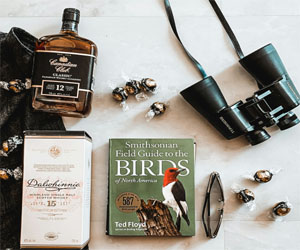 Field Marks: Bird identification often begins with field marks, which are distinctive physical characteristics. These may include a bird's size, shape, coloration, markings, beak shape, and the pattern of its wings and tail. For example, the size and shape of a bird can help you distinguish a robin from a sparrow.
Field Marks: Bird identification often begins with field marks, which are distinctive physical characteristics. These may include a bird's size, shape, coloration, markings, beak shape, and the pattern of its wings and tail. For example, the size and shape of a bird can help you distinguish a robin from a sparrow.
Plumage And Colors: Observing a bird's plumage, or feathers, is a key aspect of identification. Look for unique color patterns on a bird's head, back, wings, and underparts. These colorations can vary widely among species, such as the vibrant red of a cardinal or the iridescent blue of a jay.
Behavior And Habitat: The behavior and habitat of a bird can provide valuable clues for identification. Some species are known for their distinctive behaviors, such as the woodpecker's habit of tapping on trees. Birds are also often associated with specific types of environments, like wetlands, forests, or grasslands.
Tools For Bird Identification:
Binoculars: A good pair of binoculars is essential for getting a closer look at birds in the wild. They allow you to discern fine details and field marks that might be indistinct to the naked eye.
Field Guides: Field guides are books or digital resources that provide detailed information on bird species. They contain illustrations, photographs, range maps, and descriptions that can help you identify birds based on their physical characteristics and habitat.
Apps And Websites: In the digital age, there are numerous bird identification apps and websites that offer comprehensive databases, bird calls, and interactive tools to assist in recognizing and learning about different bird species.
Audio Guides: Bird vocalizations, such as songs and calls, are crucial for bird identification. Audio guides or smartphone apps that provide bird sounds can be indispensable in determining the species you're observing.
 One of the most remarkable aspects of rekindling your love for the wilderness is the opportunity to escape the digital noise and chaos of modern life. The wilderness offers an oasis of silence, away from the constant barrage of screens, notifications, and the distractions of city living. In the hushed tones of the forest, the gentle rhythm of the river, and the songs of birds, you'll find a profound serenity that washes away the stresses of daily life.
One of the most remarkable aspects of rekindling your love for the wilderness is the opportunity to escape the digital noise and chaos of modern life. The wilderness offers an oasis of silence, away from the constant barrage of screens, notifications, and the distractions of city living. In the hushed tones of the forest, the gentle rhythm of the river, and the songs of birds, you'll find a profound serenity that washes away the stresses of daily life.
Rekindling your love for the wilderness is also an invitation to return to the basics of existence. Camping, hiking, and exploring untamed landscapes encourage us to appreciate the simple joys of life. Gathering firewood, preparing meals over an open flame, and finding shelter under the stars reconnect us with our most primal instincts. In this way, we rediscover the essence of survival and self-sufficiency.
Furthermore, the love for the wilderness is an opportunity to reconnect with your inner self. Away from the distractions of screens and the demands of daily life, you'll have the space and time for introspection and contemplation. The wilderness invites you to reflect on your dreams, your aspirations, and the things that truly matter. It's a time to gain clarity, renew your sense of purpose, and deepen your connection to the natural world.
Rekindling your love for the wilderness is also a return to the essentials of human connection. Campfires become gathering places for stories and laughter, where bonds are strengthened and shared experiences become lifelong memories. The simplicity of the wilderness provides a unique setting for building and nurturing relationships, away from the constant distractions of modern living.
Moreover, the love for the wilderness encourages you to appreciate the beauty and wonder of the environment. Whether it's the grandeur of towering mountains, the tranquility of a hidden forest glade, or the starry expanse of a night sky, the wilderness becomes a canvas for you to explore and appreciate. The innate beauty of the natural world reminds you of your place within it, fostering a deep appreciation for the Earth's wonders.